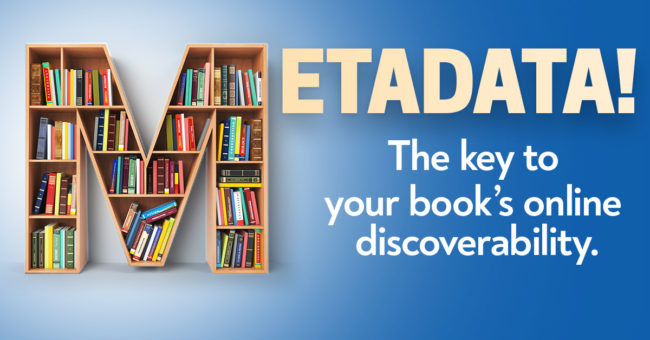Increase your book's discoverability with metadata!
Do you find yourself wondering how people will find your book after it is available for sale? A large and critical part of the answer is metadata. Understanding metadata and applying it properly is extremely important in the discoverability of your book.
What is metadata anyway?! It's kind of a mysterious and strange, "techy" sounding word that seems like it might be hard to apply. In short, metadata is data that provides information about other data. (Is that enough "datas" for you?) In the case of your book, it is all of the information that describes your book and includes these categories:
- Title
- Subtitle
- Author Names
- Description
- Editorial Reviews
- Author Bio
- Keywords
- Categories
- Product details
- Community Reviews
Google, Amazon and other sites have powerful technology that analyses all of this data so that it can show users of their services the most relevant content possible. All of the pieces of metadata that you assign to your book work together to help online sites know to show your reader your book. It then will help that reader determine if they want to read and ultimately purchase your book. So you can see why it is very important that each metadata category be fully and accurately filled out.
10 Tips for Selecting Keywords
- You're metadata will be used in many places, so keep a master document on your computer so you have it handy when you need it. This method also makes it easy to add to and keep your metadata current.
- In KDP you can choose up to 7 keywords and phrases, but have a list of 10-20 strategically chosen high quality keywords and phrases on hand.
- Keep them generic words that readers would use when searching.
- Don't repeat words in the title & subtitle - they are already taken into account by search engines.
- Include synonyms and spelling variations.
- Don't include misspellings. Amazon will offer alternate spelling of misspelled words to the searcher.
- Make your keywords specific to your book. They should not include other author names or titles.
- Do use search words and phrases that readers will use together to find your book and enter them in a logical order.
- If your book is about a specific location be sure to include that.
- It's also good to know that keywords work together with your chosen BISAC category and may increase your books' discoverability. So get as specific as possible with your BISAC categories because they are used by many companies throughout the supply chain to categorize books based on topical content. We'll explore more about BISAC Subject Codes in a later newsletter.
Pro Tip: If you run out of ideas for keywords, take a look at your reviews! Your readers may use some great words to describe your book.
- If you don't have any reviews, check out a similar author and see how their readers describe their book.
While it does take some careful research to find great keywords, it is well worth your time and effort to find and compile relevant and specific keywords. You can then consider how these keywords may be used to form a high quality book description that further increases the chance that readers will be shown your book when they perform their searches.
For more information you can check out this helpful video from KDP University, and Ingram Spark's Free Online Self-Publishing Course.
For more information you can check out this helpful video from KDP University, and Ingram Spark's Free Online Self-Publishing Course.
Want more tips like this? Subscribe to my monthly book design newsletter.
Help for Independent Presses
Book Design & Production
Have you written a nonfiction or fiction manuscript? After it has been professionally edited, I can design the interior pages and cover, plus guide you through the maze of book publishing and printing. To get started, contact me to discuss your project and my helpful guide for authors.

